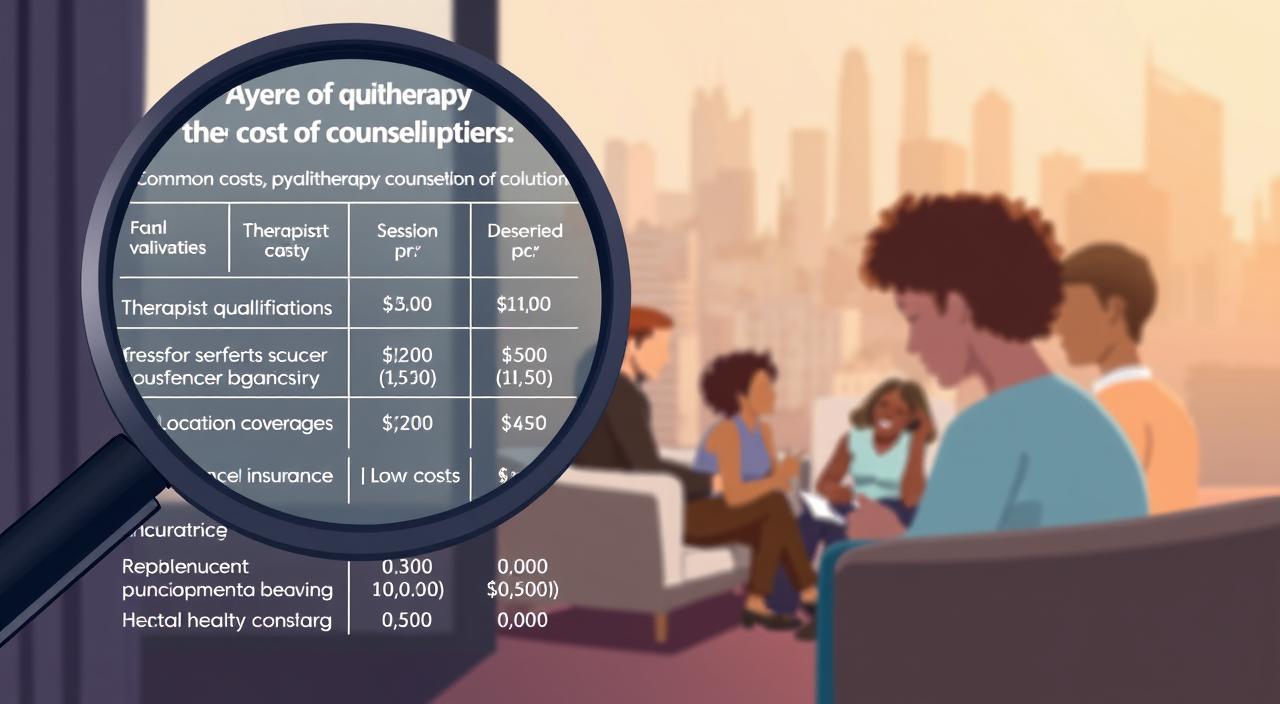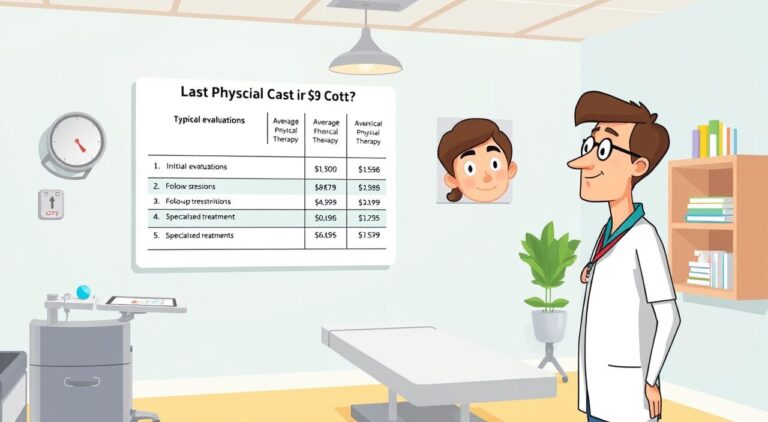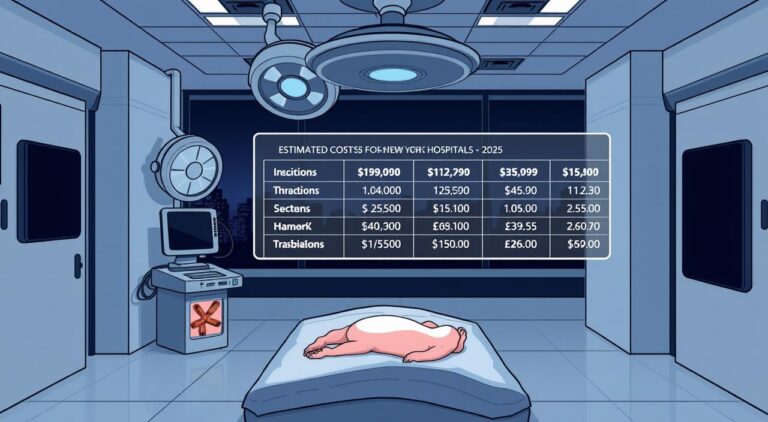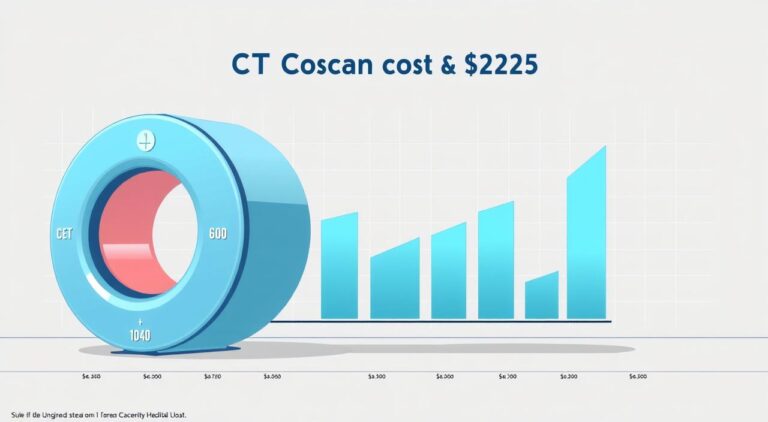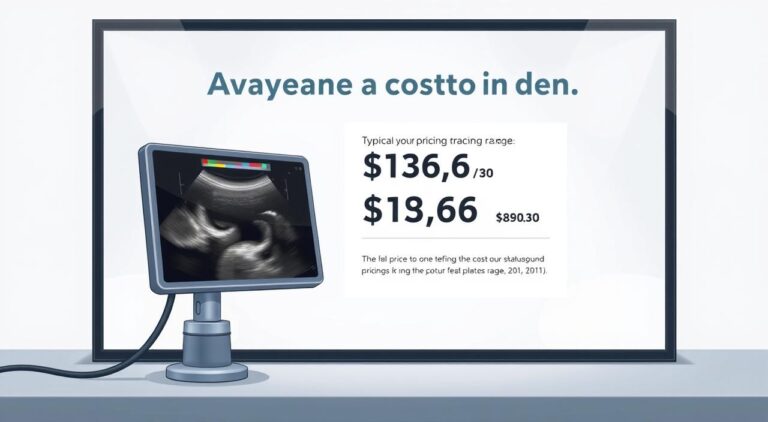How Much Does Psychotherapy or Counseling Cost in the US?
Understanding therapy expenses helps you make smart choices for your mental health. In 2025, professional mental health treatment typically ranges from $100 to $250 per session for in-person visits. Online options offer more budget-friendly choices, averaging $65 to $95 weekly.
The national average sits around $143 per session without insurance coverage. Your actual out-of-pocket costs depend on several important factors. Insurance status, geographic location, and provider type all influence the final price.
Since the Affordable Care Act required behavioral health coverage, access has improved significantly. Yet many Americans still face financial barriers when seeking treatment. Knowing the full spectrum of options—from premium services to free community programs—empowers your decision-making.
Investing in your emotional well-being through professional therapy yields substantial returns. Improved relationships, career performance, and overall quality of life make this investment worthwhile. This guide breaks down every cost factor and reveals affordable alternatives you might not know about.
Key Takeaways
- In-person therapy sessions typically range from $100 to $250 each
- Online therapy offers more affordable options at $65-$95 per week
- Insurance coverage dramatically affects your out-of-pocket expenses
- The national average cost without insurance is approximately $143 per session
- Multiple factors including location and provider type influence final costs
- Various payment options and sliding scale fees make treatment accessible
- Investing in mental health care provides significant life improvements
What Factors Affect the Cost?
Your investment in emotional wellness depends on a complex interplay of pricing factors. Understanding these variables helps you make informed decisions about your mental health journey.
Therapist Credentials and Experience
Therapist qualifications create a clear pricing hierarchy. Psychiatrists with medical degrees often charge over $200 per session, while licensed clinical social workers typically range from $100-$150.
Specialized training commands premium rates. EMDR or DBT therapists invest years in additional certification, resulting in 20-40% higher costs than standard cognitive behavioral therapy.
Session length and frequency also impact your budget. Standard 45-50 minute appointments form the baseline, while extended sessions or twice-weekly meetings increase monthly expenses.
Geographic Location and Overhead Expenses
Location dramatically influences therapy rates, primarily due to provider availability. States with fewer mental health professionals experience “therapy deserts” where limited supply drives prices upward.
North Dakota averages $227 per session compared to Missouri’s $122. This stems from provider scarcity—one psychologist per 4,900 citizens versus New York’s one per 2,690.
Overhead costs directly affect pricing. Urban therapists with expensive office space charge more than online-only providers or suburban practitioners. Practice size matters too—larger groups often offer better insurance options and sliding scale fees.
Affordable Therapy Options
Budget-friendly mental health services are more accessible than many people realize. Numerous programs and resources exist to make professional treatment affordable for everyone.
Community Clinics and Sliding Scale Services
Many therapists offer sliding scale fees based on income, even if they don’t advertise this option. Simply asking during your initial consultation can reduce session costs significantly.
Community mental health clinics provide essential services regardless of financial situation. These facilities often receive public funding to offer comprehensive care.
University training clinics connect you with supervised graduate students. They deliver evidence-based therapy at rates as low as $5-$40 per session.
Employee Assistance Programs and Free Resources
Employee Assistance Programs represent a hidden gem for working Americans. Most employers offer 3-8 completely free counseling sessions annually.
Free digital resources provide immediate support when you need help. Crisis Text Line offers real-time counseling, while Bliss focuses on depression treatment.
Clinical research studies at universities may provide completely free comprehensive treatment. This includes therapy, medication, and monitoring for qualifying diagnoses.
Online platforms like Open Path Psychotherapy Collective democratize access with sessions starting at $40. These services make professional help available to broader audiences.
Understanding Insurance and Payment Plans
Navigating insurance for therapy can feel complex, but mastering a few key terms saves you money. Your health insurance plan is a powerful tool for accessing affordable mental health services.
Before your first appointment, verify your coverage. Call the number on your insurance card. Ask specific questions about mental health benefits.
Copays, Deductibles, and In-Network Benefits
Insurance payment structures vary. With a copay plan, you pay a fixed fee per session, often between $0 and $55. Deductible plans require paying the full session cost until you meet your annual limit.
Coinsurance means you pay a percentage of the fee after the deductible is met. The most crucial distinction is between in-network and out-of-network providers.
Choosing an in-network therapist means lower out-of-pocket costs. Your insurance handles billing directly. Out-of-network care often requires paying upfront and seeking partial reimbursement.
Always ask: “Is this provider in-network? What is my copay? Do I need a referral?”
Medicaid and Medicare offer significant coverage. Medicaid typically has minimal copays. Medicare covers 80% of costs, leaving you with an average of $29 per session.
The Affordable Care Act ensures mental health parity. Yet, plans can have session limits or network restrictions. Many clinics offer online verification tools for accurate cost estimates upfront.
In-Person Versus Online Therapy Costs
Choosing between in-person and online therapy involves more than just comparing price tags. Each model offers distinct financial and therapeutic benefits. Your ideal choice depends on your budget, lifestyle, and specific mental health needs.

Benefits and Limitations of Each Model
Online platforms often provide better value through subscription models. You might pay $65-$95 weekly for continuous support. This includes messaging access alongside your video session.
Teletherapy eliminates hidden costs like commute time and parking fees. It also expands your options to any licensed professional in your state. This helps you find more affordable specialists.
In-person sessions offer a deeper level of connection. Therapists can observe subtle body language and non-verbal cues. This can be crucial for complex conditions like trauma.
The best modality depends on your personal situation. Consider these key points:
- Convenience & Cost: Online therapy saves time and money on travel.
- Therapeutic Depth: In-person care may be better for severe issues.
- Flexibility: Many therapists now offer hybrid models.
Investing in your mental health is a personal journey. The right format makes treatment sustainable and effective for you.
Additional Resources for Mental Health Care
Building your mental health support system requires knowing where to find reliable help. Treatment duration varies significantly—some issues resolve in weeks while complex conditions may need months of consistent therapy.
Always ask providers about their approach to your specific concerns. Inquire about their experience with similar cases and expected treatment timeline.
Trusted Sources and Directories
National databases streamline your search for qualified professionals. These platforms verify credentials and filter by specialty.
Essential resources include:
- FindTreatment.gov – Government-verified provider directory
- Mental Health America – Educational materials and local referrals
- Crisis Text Line – 24/7 free support via text messaging
Culturally-specific organizations address unique community needs. Therapy for Black Girls and Latinx Therapy connect people with understanding providers.
Specialized tools like Inclusive Therapists help find professionals matching intersectional identities. These services prioritize cultural competence in mental health care.
Your state’s health department often funds community clinics offering sliding scale fees.
Peer support communities provide real-world insights about treatment experiences. These networks complement professional services beautifully.
What To Ask Before Booking a Session
Asking the right financial questions before your first therapy session prevents surprises and builds a strong foundation for your care. Clear communication about payment and insurance coverage sets the stage for a positive therapeutic relationship.
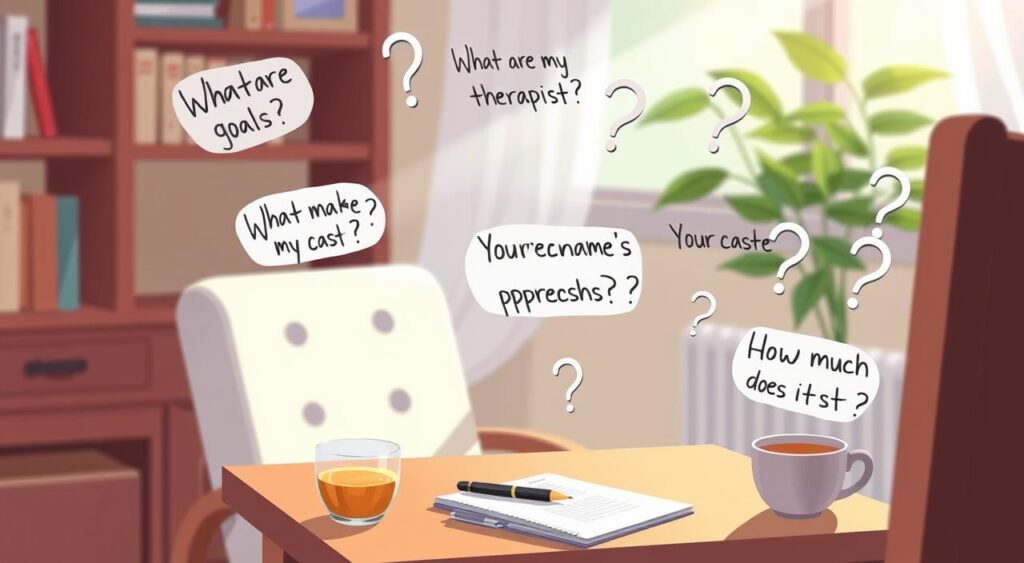
This proactive approach ensures your treatment plan is both effective and financially sustainable.
Questions on Fees and Sliding Scale Options
Start by discussing the therapist’s standard session rates. Inquire about their full fee structure upfront.
Essential questions include:
- What is your standard session rate?
- Do you offer a sliding scale based on income?
- What is your cancellation policy?
- Do you provide payment plans?
Many therapists have flexible payment options they don’t actively advertise. Simply asking about sliding scale fees can significantly reduce your out-of-pocket cost.
Clarifying Insurance Coverage Details
Understanding your insurance benefits is crucial for managing therapy expenses. Verify coverage directly with both your provider and the therapist.
Key insurance questions protect you from unexpected bills. Always confirm if the therapist is in-network with your plan. Ask about your specific copay amount and any session limits.
“Do you file claims directly, or do I need to seek reimbursement?”
This clarifies the payment process. Also, ask if a referral from your primary care doctor is required for coverage. Getting these details in writing provides peace of mind.
How much does psychotherapy or counseling cost in the US
Professional therapy pricing varies significantly across different payment methods. The national average sits at $143.26 per session when paying out-of-pocket. This figure comes from 2024 data covering over 175,000 therapists nationwide.
In-person sessions typically range from $100 to $250 depending on provider credentials. Online platforms offer more budget-friendly options averaging $65-$95 weekly. Some services drop as low as $40 per session.
Insurance coverage dramatically alters your expenses. Medicaid recipients often pay minimal or no copays. Medicare beneficiaries average just $28.65 per session after coverage. Private insurance holders see costs ranging from $0 copays to full session fees.
Geographic location creates surprising disparities. Identical services cost $227 in North Dakota versus $122 in Missouri. This 85% difference stems from provider availability rather than living costs.
Understanding these ranges helps you recognize fair market rates. It also reveals numerous pathways to affordable care. Sliding scale fees and community clinics make treatment accessible regardless of budget.
The average cost shouldn’t deter anyone from seeking mental health support. Multiple options exist to match different financial situations. Your emotional wellness deserves investment at every price point.
Special Considerations for Different Demographics
Specific populations face unique financial considerations when accessing mental health support. Students and low-income individuals have specialized pathways to affordable care that many people overlook.
Cost Variations for Students and Low-Income Individuals
College students often have completely free mental health services through campus counseling centers. Most universities include 6-12 individual sessions per academic year in tuition fees. These services typically offer unlimited group therapy and crisis intervention.
Income-based sliding scale programs transform therapy from impossible to affordable. Many private practitioners reduce standard $150 rates to $30-$60 based on verified income. This maintains provider quality while increasing accessibility.
Medicaid expansion has revolutionized access for low-income adults. Most states now cover comprehensive mental health treatment with minimal copays. Eligibility requirements vary, but coverage includes therapy and medication management.
Group therapy provides a cost-effective alternative at 50-60% less than individual sessions. The peer support component adds therapeutic value beyond simple cost savings.
University training clinics bridge the gap between free campus counseling and private practice rates.
Online platforms democratize access with subscription models under $100 monthly. These services remove traditional barriers like transportation and scheduling conflicts. Financial assistance programs specifically target students and low-income users.
Tips for Budgeting for Therapy
Budgeting effectively for mental health care ensures uninterrupted treatment progress. Smart financial planning makes consistent sessions achievable within any budget. Start by calculating your true monthly commitment.
Weekly therapy at $100 per session means $400-$500 monthly. Bi-weekly appointments reduce this to $200-$250. This helps determine if therapy fits your current financial situation.
Setting a Realistic Budget and Exploring Options
Maximize existing benefits before spending out-of-pocket. Thoroughly investigate your insurance coverage and use all available EAP sessions. Health Savings Accounts allow pre-tax dollars for qualified mental health expenses.
Create a therapy-specific savings category in your budget. Treat mental health care as a non-negotiable priority. Consistent investment yields better outcomes than sporadic sessions.
Explore creative payment strategies with your provider. Many therapists offer package deals for prepaying multiple sessions. Reduced rates for consistent attendance make high-quality care more manageable.
Consider the long-term financial cost of NOT getting treatment. Untreated conditions often result in lost productivity and relationship problems. Starting therapy now—even at a lower cost point—beats waiting for the perfect expensive therapist.
Open communication about financial concerns prevents unexpected interruptions. Many practitioners prefer working with committed clients on fees rather than losing them. Discussing budget constraints early ensures sustainable care.
The Impact of Therapy on Overall Well-Being
The true value of professional mental health treatment becomes evident in the profound life improvements it facilitates. Research shows that 87% of people experience meaningful improvements from therapy. This investment yields returns across all life domains.
Therapy doesn’t eliminate life’s challenges but transforms how you respond to them. It builds lasting coping strategies and emotional regulation skills. These tools serve you for decades after treatment ends.
Career benefits often offset the financial cost of therapy. Addressing depression, anxiety, or workplace issues leads to better performance and advancement opportunities. Many people see increased earning potential after mental health treatment.
Relationship improvements represent another significant return. Therapy enhances communication skills and helps establish healthy boundaries. This creates more satisfying connections with partners, friends, and family members.
The physical health benefits are equally important. Treating mental health conditions often leads to better sleep, exercise habits, and reduced stress. This preventive value can lower future medical expenses.
Ultimately, therapy represents one of the most valuable long-term investments in personal well-being. The cost of untreated mental health issues far exceeds the price of professional treatment.
Conclusion
Taking the first step toward therapy is empowered by knowing that quality care exists at virtually every price point. Session fees range from free community resources to over $250 for specialists.
The national average for a session without insurance is about $143. However, using your insurance benefits can dramatically lower therapy costs to a simple copay.
Many therapists may offer sliding scale fees or payment plans. Exploring online platforms and employee programs opens doors to affordable treatment.
Investing in these services supports your overall health and well-being. The right therapist fit is crucial for effective sessions. Do not delay seeking help for your mental health.
Your well-being is worth the investment. Start your journey today.
